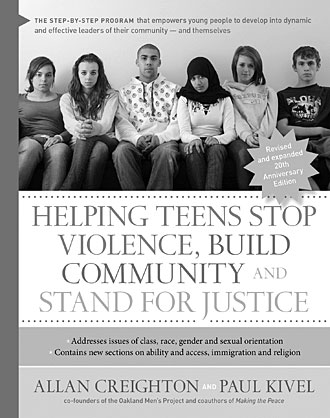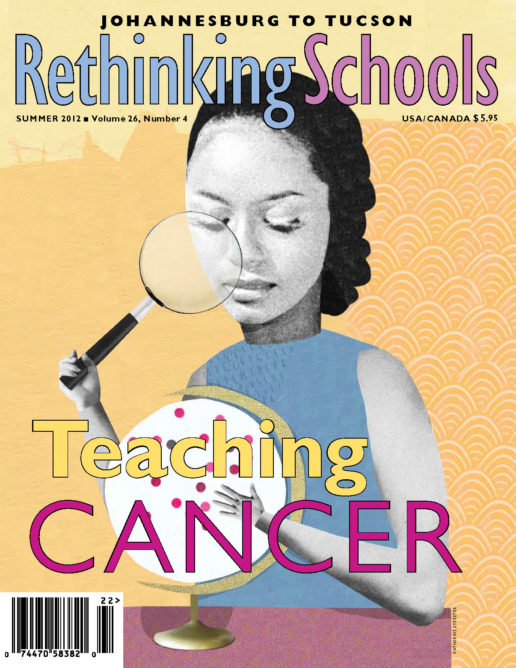Good Stuff 26.4
Stand for Justice

Helping Teens Stop Violence, Build Community, and Stand for Justice
By Allan Creighton and Paul Kivel
(Hunter House, 2011)
204 pp. $19.95
“It is an assumption of our work that young people are not the problem—they are part of the solution.”
Most K-12 educators have been told at some point that issues like race, privilege, violence, sexism, and adultism are distractions from academic priorities. Helping Teens Stop Violence, Build Community, and Stand for Justice aims to show that adults can and should have these essential discussions with youth. It is a handbook on the issues that affect today’s young people.
Twenty years ago, Allan Creighton and Paul Kivel published Helping Teens Stop Violence, which grew out of their work with the Oakland Men’s Project. This expanded and revised edition acknowledges a changing world situation and incorporates the results of many years of conducting workshops with adults and youth. It is organized into sections: Preparing to Work with Youth, Liberation Theory and Practice, Overview of the “Isms,” Being in the Classroom, and Do You Have My Back? Young People and Solidarity. The book includes new sections on adultism, transgender issues, environmental justice, and Christian hegemony, among others.
I recently had the chance to participate in a workshop Kivel led in Milwaukee. He modeled the Heart Exercise, which is included in the book. First he asked us to describe a newborn baby. We called out words: innocence, love, beautiful. He drew a big heart around our words. Then he asked us: “What are hurtful things that might be said to a toddler or young child?”
“NO!” “Stop that!” “Are you stupid?” The words came quickly and too naturally.
“What if the child is large?” he asked. “Comes from a family without much money? Doesn’t speak English?”
As we responded, he drew a slash through the heart for each negative comment, creating a powerful visual. “Hearts are strong muscles,” he told us as he drew semicircles around the heart, “but in order to cope we protect our hearts with shields. Now we are left with a beautiful pure heart, badly scarred and shielded to prevent further hurt. That makes it very difficult for two hearts, when they are in the same vicinity, to communicate with each other. When someone speaks to me, their words must negotiate through all their scars and shields, and then through mine.”
Kivel used the exercise to introduce the idea that most of our emotional scars come to us systemically based on our membership within various groups—including race, gender, sexual orientation, and economic status. His workshop was a reminder that our job as educators is to prepare young people for the world they live in. Empowering youth and encouraging them to speak out should be a central goal of our teaching. If we choose not to do that, Kivel pointed out, “We have to ask ourselves, whose agenda are we following?”
In the introduction, Creighton and Kivel explore two questions that frame their book: “What do you stand for?”—essentially a question about values—and “Who do you stand with?”—a question about allies. “Working for social justice,” they write, “means above all standing together to uproot the tree of violence and to nurture and sustain the tree of life.” Helping Teens Stop Violence, Build Community, and Stand for Justice is a valuable resource for teachers and adults who are trying to help young people recognize and overcome the obstacles to becoming allies to create a better world.

